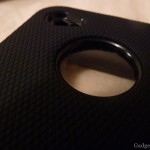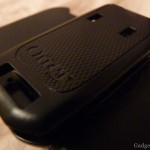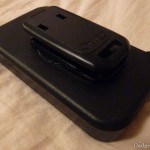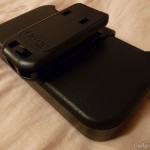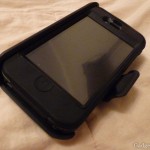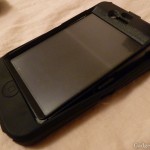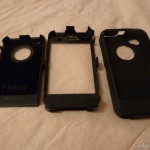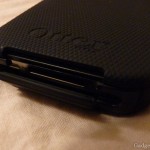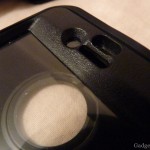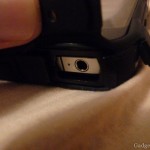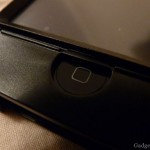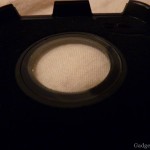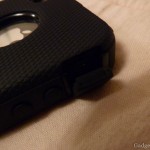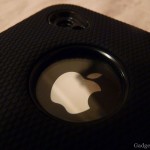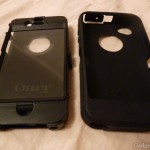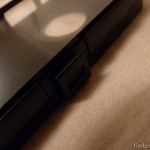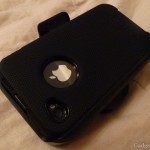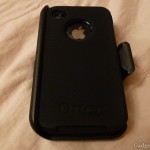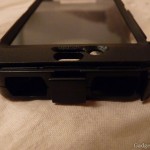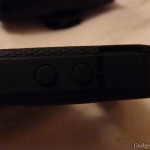OtterBox Defender for iPhone 4 Review
After the slightly less than perfect OtterBox defender for the iPad, it’s great to see that OtterBox are still churning out fantastic phone cases. The iPad was a difficult challenge, and they made a cracking good attempt but it just isn’t as polished, tight and, well, perfect as their offering for the iPhone 4.
The OtterBox Defender for iPhone 4 is my current case of choice above the slip cases I have been using since I got my hands on the coveted Apple phone. Why? It offers peace of mind that no other case has ever, or probably will ever, come close to offering. The level of protection offered is quite evident when comparing an OtterBox clad iPhone 4 against a naked one. The thickness has doubled, thanks to a healthy incarceration of shock absorbing silicone and a durable polycarbonate shell. OtterBox do make waterproof products, such as the 2600 with which you can take an iPhone 4 into the bath with you for some quality TV-watching time, but the OtterBox Defender series isn’t waterproof. It’s water resistent, however, and will deal with rain, splashes and water exposure a lot better than a naked iPhone.
Unlike the iPad OtterBox Defender (where the task of adding such protection would have been absolutely mammoth) the iPhone 4 has OtterBox’s typical built-in screen protector, it does unfortunately also have the same problems as the iPhone 3G/3Gs OtterBox I tested around a year ago. The plastic “sucks” down onto the screen, leaving the kind of bubbles you would expect from a poorly applied screen protector, however applying your own screen protector will solve this issue. It seems that OtterBox have neglected to include a screen protector with this particular case… an oversight that doesn’t bother me too much, as I dislike their glossy screen protectors and prefer a matte finish. Fortunately Griffin stepped in with their screen care kit, and the Defenders ills are cured. Yup, this leaves you with, effectively, two screen protectors on your iPhone 4… you can’t really get more protective than that.
Speaking of the iPhone 3G/3Gs OtterBox, it has been on my iPhone constantly for almost a year now (I reviewed it back in August 2008), and in this time said phone has been entrusted to my 3-year old daughter (she loves Plants V Zombies) and thus subjected to all manner of abuse. The iPhone 3G has survived unscathed, and thus my trust in OtterBox remains understandably strong. The iPhone 3G/3Gs OtterBox is actually still my favourite of the range and is, in many ways, aesthetically nicer than the new iPhone 4 version. Stargate fans might also have noticed its appearance in the latest Stargate spin-off series Stargate Universe, in which an OtterBox-clad iPhone 3G has replaced the good old Tapwave Zodiac that was seen throughout the other series.
Despite its less appealing aesthetics, the iPhone 4 OtterBox defender shows a great many refinements from their older model. The rubber button covers have a much better design, are far more distinct and much easier to press than on their predecessor, a ring of recessed silicone around them makes for less resistance and a better translation of your button push through to the iPhone’s actual button, plus better tactile feedback. This technique has been borrowed from other ruggedised devices, and works extremely well. The back of the case is textured with a diamond pattern which affords a slightly better grip, unfortunately the square shape of the new iPhone, and thus the OtterBox itself, leaves less area for hand contact. Less of the polycarbonate inner shell is exposed to the outside on the sides, leaving less chance of shock being translated through to the phone itself and, finally, the rubber caps protecting the dock port, headphone port, and mute switch are much more secure and easier to close properly.
The original case had a less than brilliant belt holster into which the iPhone could only be placed one way up, with the screen facing inward. It would fit with the screen facing outwards, but it would also very, very easily fall out. Quite fortunate, then, that it’s protected by the OtterBox. The iPhone 4 OtterBox defender belt clip has a much better mechanism for holding the iPhone into place. The clip is secure, and doesn’t let the iPhone 4 fall out no matter how you choose to orientate it. Obviously, holstering it with the screen facing inwards offers much, much more protection from accidental knocks.
The same ratcheting belt clip is used, you can turn it any way up you like, and this works well with the much-more-secure iPhone 4 gripping mechanism. The holster and belt clip can also be used as an impromptu desktop stand for your iPhone 4.
Finally, the OtterBox Defender for iPhone 4 is easy to install and remove. The polycarbonate shell comes in two separate parts, one of which is obviously that which you slot the iPhone into first. The second part of the shell clips onto the back of the first much like a well designed battery cover would, and the rubber goes over the top to hold it all firmly together and, of course, provide shock absorption and some degree of water resistance. The inside-back of the case is covered with a soft felt coating which guarantees that your phone wont get scratched when you’re taking it in and out of the OtterBox.
Getting the OtterBox on and off is quick and easy, which is good because you’ll probably want to take it off often for docking your iPhone or simply showing it off.
Overall, the OtterBox defender proves to be a secure, protective and extremely well finished whole that shows a clear trend of improvement to OtterBoxes designs over the past year or so.
